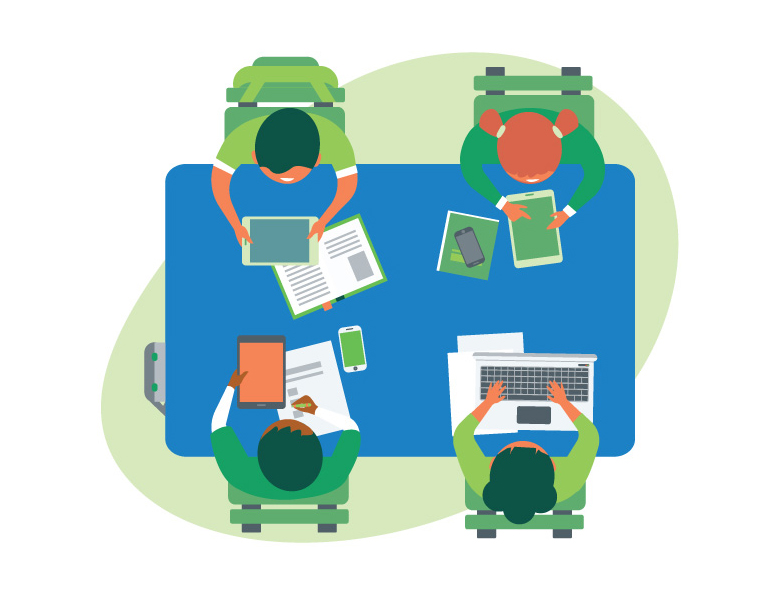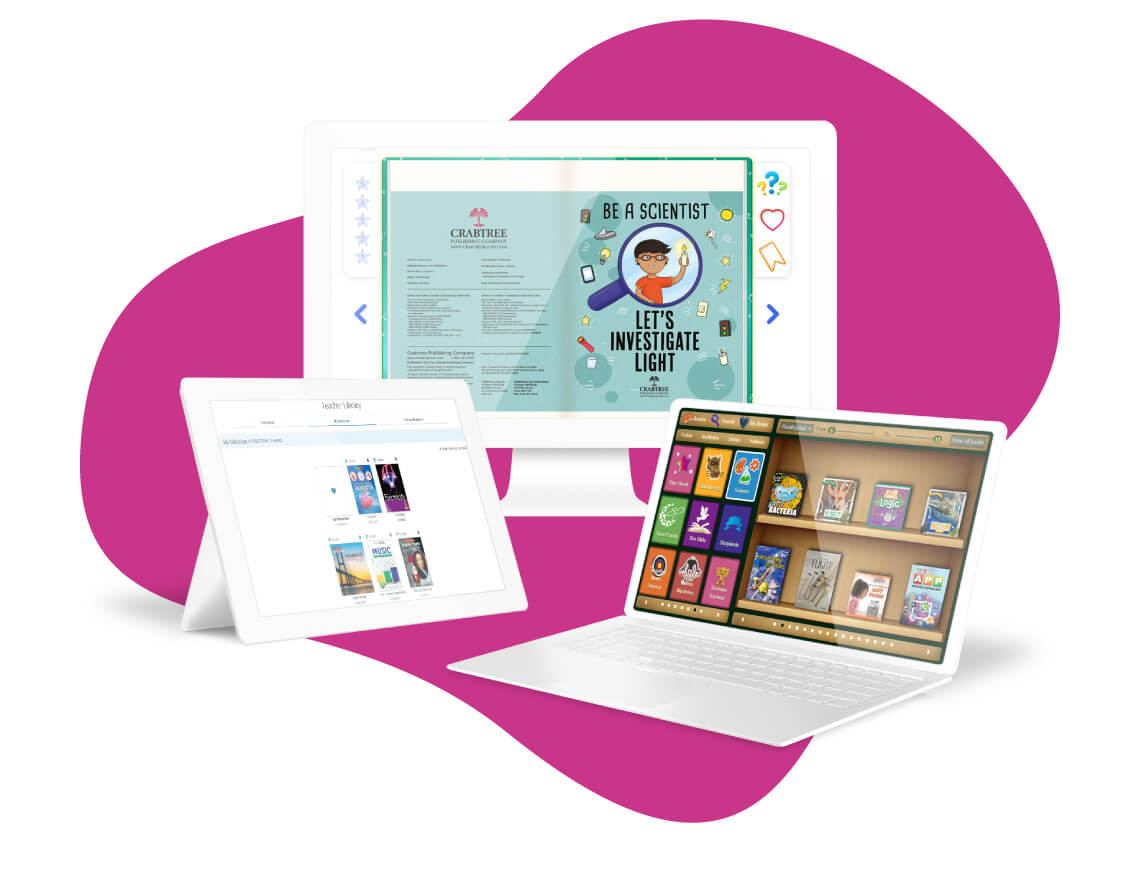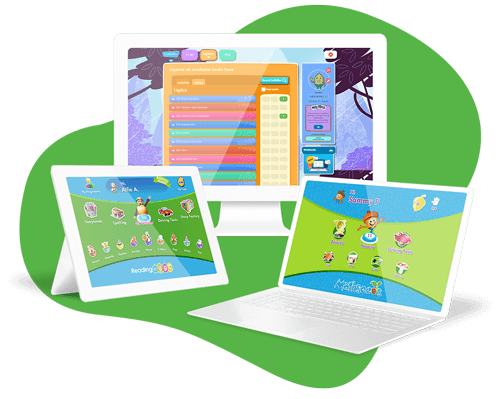
Technology is becoming ever-present in modern classrooms. But for many of us teachers, we’re still not sure how to feel about it.
We want to engage students and prepare them for the future, but we can’t help but worry at the same time.
Do they really need more screen time?
How much time and effort (not to mention money) is this going to cost?
That’s because there are both pros and cons to using technology in the classroom. We’ve listed 13 of them here so you can decide what role it should play in your teaching.
Pro: technology makes learning more engaging
There are many research-backed reasons why technology engages young people.
But you don’t need to be a neuroscientist to understand its engagement potential. Just put a battered textbook side by side with the colorful, interactive screen of a gamified learning program and it will become pretty obvious.
Technology can hook students with the fun, bright learning experiences we often struggle to create on paper. Bring it into the classroom and your students will be just as engaged with learning as they are with their social media feeds.
Con: technology can be a distraction
The constant lure of social media or not-so-educational games can turn our students away from learning if we’re not careful.
But the distractions tend to arise when we leave students to their own devices (pun intended). That’s why it’s important to keep a watchful eye over students when they’ve got their laptops open, or to choose a self-contained edtech program so they aren’t left to roam the internet at will.
Pro: technology is a cost-effective alternative to traditional materials
Textbooks don’t come cheap, and neither does the annual photocopying bill.
Technology can help you cut back on these hidden costs. Uploading a worksheet to your LMS in soft copy will save you a ream of paper. A video platform such as ClickView opens up hundreds of otherwise costly educational videos. A Reading Eggs subscription even comes with over 3,500 online books included.
Whatever option you choose, that’s money saved and ready to invest where your department needs it most.

Create your own book collection + get access to over 3,500 online books and more!
Con: good tech tools cost money
There’s no getting around it – the best tech tools don’t come for free.
But the old adage of ‘you get what you pay for’ applies to edtech, too. While there’s plenty of free software out there, most of it won’t compare to technology that’s curriculum-aligned and teacher-tested.
Pro: technology gives students and teachers access to an endless supply of learning resources
The internet is the 21st century classroom bookshelf. It’s full of learning resources that teachers and students can access anytime, anywhere there’s wifi.
This access can power independent learning. Instead of just being spoon-fed the learning content in class, students can watch a YouTube tutorial at home to clarify a concept, or hone their mathematics fluency with a Mathletics lesson before dinner. It’s the initiative teachers have preached for years, and it’s never been more possible.
Con: unreliable information is everywhere
Not everything published on the internet is true (shocking, we know).
But assessing the reliability of digital information is a vital soft skill in today’s day and age. That’s why instead of avoiding it, we need to teach our students how to critically assess what they read and hear as they navigate the digital sphere.
If you’re still worried about students being led astray, it’s worth using software that’s been curriculum-aligned and pedagogically tested by real teachers. For example, 3P has a team of educators from all over the globe who ensure our products are explicitly mapped to regional curriculum standards.
Pro: technology can save teachers time
Only once we’ve conquered stacks of marking, created resources, and wrestled with an uncooperative printer can we teachers get into the classroom and do what we do best.
Technology can save us that time – whether via automated marking, sourcing pre-made activities, or just cutting back on paperwork.
We can invest this extra time back into those things we never get around to; signing up for that professional learning course, having a long overdue conversation with a parent, or preparing a special support activity for the student who’s been struggling all week.
Con: technology takes time to learn and integrate
Edtech comes with an upfront time investment. You’ve got to get it set up, learn how it works, and walk your students through it before it can become a classroom staple.
That’s why it’s important to opt for user-friendly tools that come with dedicated a support system. The 3P Learning Help Hub, for example, has customer service teams dedicated to both technical support and product training – so you can always get someone on the phone when you need a point in the right direction. If you don’t have that option, you can always look up a video tutorial on YouTube or google tips from fellow teachers.
Pro: technology allows for authentic learning opportunities
Technology is the missing link between classroom learning and the world outside. As teachers we can leverage this for authentic learning that’s more real and relevant than ever before. For example, students can:
- share their work with a genuine audience via a blog or social media
- connect with peers from the other side of the world
- dive into real-world problems that effect real people
- explore new places with Google Earth.
Con: not all tech-enhanced teaching strategies make a difference to student learning
Putting a screen in front of students doesn’t automatically make for meaningful learning. Sometimes it does the opposite.
If we want to use technology meaningfully in our classrooms, we have to make sure it adds something to student learning. This might be:
- increased engagement
- motivation
- an opportunity to experience the learning content in a new way
- a new task that couldn’t be done on paper.
You can also use the SAMR model as a guide to making technology meaningful for your class.
Pro: technology opens up new possibilities for student collaboration
Group work can be a messy and time-consuming affair when coordinated face to face, but technology can make it seamless. For example, students can:
- collaborate on cloud documents
- work together in virtual breakout rooms
- communicate via discussion boards on an LMS.
The best part? They don’t even need to be in the same room, so collaborative activity will work just as well in remote or blended learning.
Con: technology can be isolating
Working solo behind a screen can become lonely, especially when students are using technology daily as part of a distance learning program.
This makes it all the more important to mix things up with collaborative activities on cloud documents and discussion boards. You can also use video tools such as Zoom to give students a more tangible sense of connection.
Pro: technology in the classroom develops students’ technological literacy skills
Technological literacy is the ability to use and adapt to technology flexibly and easily, and in an age where almost every career involves computer use, it’s never been more important.
If we want our students to thrive, we owe it to them to develop their technological literacy before they venture out into the world. There’s no way to do this without using technology in the classroom.
Note: don’t be fooled by the ‘digital natives’ argument! Our students might be permanently fixed to their devices, but that doesn’t mean they know how to use them responsibly or productively. If you’re in any doubt, think about how their emails might come across in a workplace!
Still weighing it up?
Remember that while technology has no shortage of potential, it’s how you use it that makes the difference. Implement it meaningfully and you can have the pros without battling the cons.
Read more about how technology engages students, check out the benefits of technology in the classroom, or explore our range of curriculum-aligned programs for mathematics, literacy, and science.











